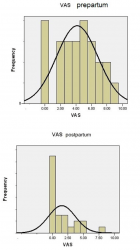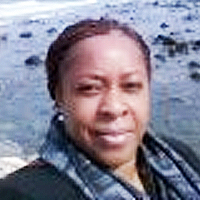Table of Contents
Dynamic knee valgus in anterior cruciate ligament non-contact injury and reinjury in professional female athletes. Determinant or not?
Published on: 15th November, 2022
Dynamic Knee Valgus (DKV) is correlated with both, Anterior Cruciate Ligament (ACL) injury and hip and ankle disorders in female athletes and has a more significant prevalence compared with male athletes because of numerous factors. The aim of this study is to determine if the connexion between DKV, landing errors, and non-contact ACL injury and re-injury in high-performance, adult, female team sport athletes can be eliminated by changing the frontal plane movement pattern and the landing errors during the rehabilitation process (RHB), a process which was focussed on dynamic knee stability with multidimensional single-leg jump landing training, on 3D knee balance improvement and multistimulus perturbation challenges and tasks,+ eccentric & concentric exercise, strength & conditioning, aerobic training that lasted from 26 - 44 weeks.Assessing and eliminating-reducing DKV during the RHB is mandatory in lowering the re-rupture rates in female professional athletes after ACL surgery and in preventing opposite knee trauma.
Assessment and treatment of patients with kinesiophobia: A Delphi consensus
Published on: 26th October, 2022
Kinesiophobia is described as pain-related fear of movement and plays a role in the development of chronic musculoskeletal pain. Several approaches have been described in the literature, but there does not seem to be a consensus on the most appropriate way to evaluate and treat patients with kinesiophobia. The aim of this study was to identify clinically relevant assessments and treatments recommended by a consensus of experts. Fourteen experts were identified to participate in a three-round internet-based Delphi study. Participants were asked to propose assessments and treatments (round 1), to grade each proposal on a Likert scale of 9 (round 2), and to reassess their level of agreement (round 3). The consensus was defined with 75% agreement. Five methods of assessment and six treatment approaches reached a consensus. The TAMPA scale reached the top position as an assessment of kinesiophobia. Graded exposure to movement, cognitive and behavioral therapy, and pain neuroscience education were the highest-rated interventions. These results provide the first expert consensus on preferred assessments and treatments for patients with kinesiophobia and correspond with the evidence base in the literature.
Rehabilitation protocol with VISS system and human synergy mat in subjects with flat foot problems in developmental age
Published on: 18th October, 2022
The flat foot can be defined as a syndrome with multiple etiopathogenesis, characterized by an altered structure of the longitudinal arch of the plantar vault with its reduction in height. The plantar arch collapse can be counteracted by strengthening the muscles involved; for many years, specific physical exercises have been proposed for this purpose in physical and rehabilitation medicine. Our work aimed to improve the plantar arch muscles’ tone using high focal vibration therapy (300 Hz). Methods: 49 children with a 3rd degree flat foot (age: 8,7,6) underwent 10 sessions, 2 days/wk, of 30 min of focused high vibratory therapy at a frequency of 300 Hz (Vissman, Italy). Before and after treatment stabilometry (StT), static and dynamic baropodometry tests were performed. Results: Evaluation of StT showed an improvement in stability and a decrease in the sway area and ellipse area. Baropodometry tests showed a decrease in foot surface. Also, dynamic tests showed a decrease in both foot surfaces. Discussion: The results lead us to consider this method as a method of the first choice for a conservative approach in the rehabilitation of flat foot syndrome and also for 3rd grade children [1,2].
Shoulder recovery for head and neck cancer patients after unilateral neck dissection: a pilot exploratory study
Published on: 28th September, 2022
An established side-effect of neck dissection (ND) for head and neck (HNC) tumour management includes shoulder dysfunction (SD), which can impact quality of life (QOL). Shoulder strength and range of movement (ROM) are key parameters to be monitored in SD. However, such evaluations are not routinely conducted in the clinical setting. The aim of this study was to evaluate objectively the impact of ND on shoulder functions. Methods: This is a pilot exploratory study in a tertiary cancer centre. Five participants with unilateral ND and advanced HNC, completed the study. Outcome measures consisted of self-reported QOL questionnaires, C2–T1 dermatomes and shoulder ROM and strength testing. Data was collected at baseline, 1.5-months after surgery and 6-months after diagnosis (after adjuvant treatment completion). Results: Most outcome measures on the surgically affected side were negatively impacted post-operatively, with varied recovery seen at follow-up. Sensory loss was noted at C3–4 dermatome levels. Shoulder ROM and strength was reduced on the surficial side for all participants, with some recovery after six months except for two participants.Conclusion: Results of SD after ND are diverse and unique to each patient. Findings from this pilot study indicate that regular rehabilitation/exercise may facilitate recovery of shoulder function post HNC surgery. However, customised rehabilitation may yield better outcomes. Future studies with a larger sample are indicated to validate the findings of this study.
The real-time information provision problem in assessing rehabilitation needs among athletes with overtraining syndrome
Published on: 12th August, 2022
One of the biggest challenges in sports medicine is the return-to-play decisions, making or breaking athletic careers. Since there are no protocols to guide team physicians and consultants for athletes with fatigue syndrome, illness, injury, or overtraining syndrome, real-time monitoring plays a crucial role in such cases. By monitoring a combination of performance (e.g., maximal lactate concentration, maximal heart rate at lactate threshold), physiological (e.g., resting heart rate and maximal heart rate), biochemical (e.g., glucose) and hormonal (e.g., cortisol) variables, there should be objective indices determining eligibility or disqualification for the ill or injured athletes, allowing rehabilitation practitioners to improve and adjust their plan accordingly on a real-time information provision basis.

If you are already a member of our network and need to keep track of any developments regarding a question you have already submitted, click "take me to my Query."

















































































































































